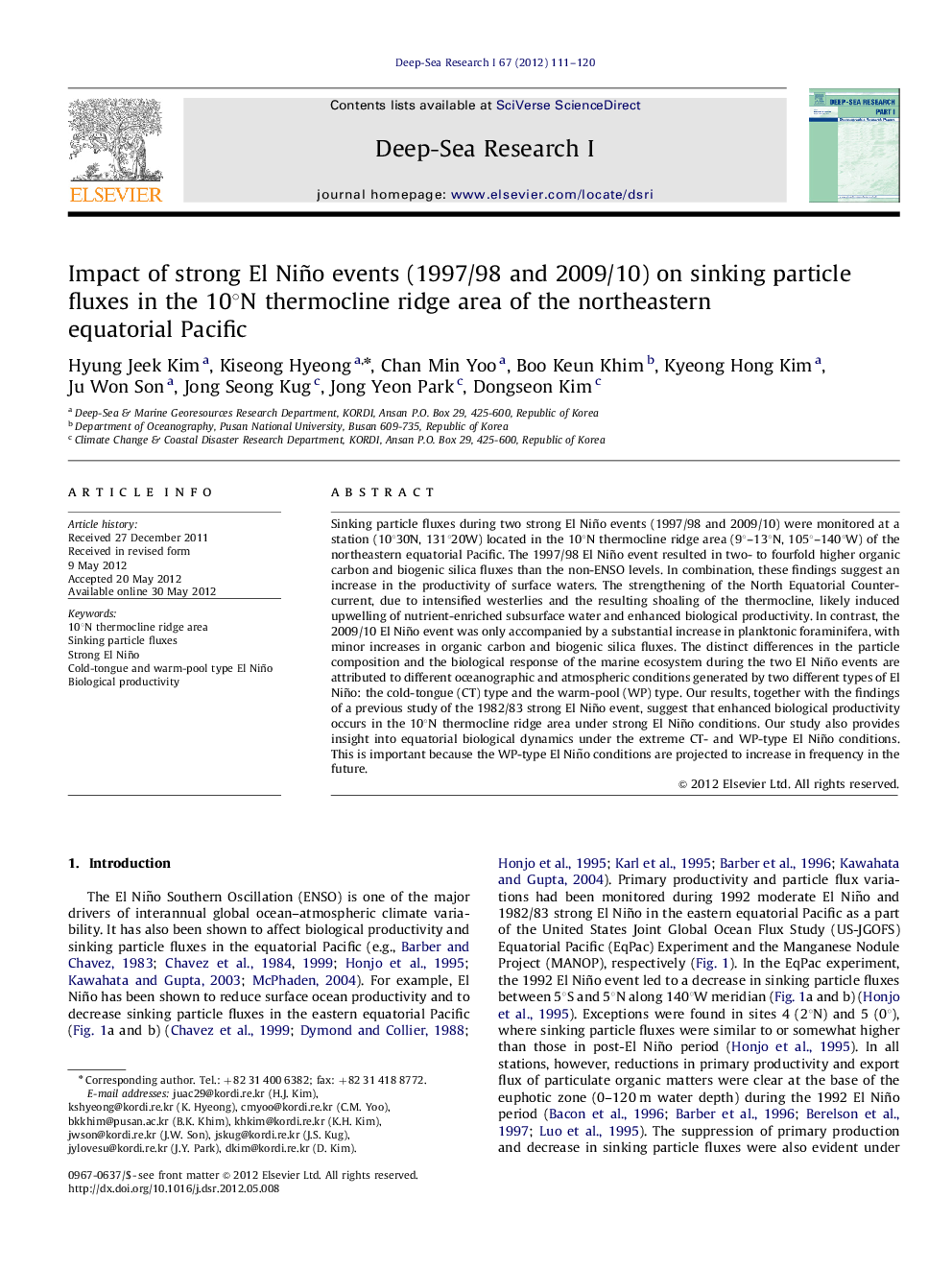| Article ID | Journal | Published Year | Pages | File Type |
|---|---|---|---|---|
| 4534675 | Deep Sea Research Part I: Oceanographic Research Papers | 2012 | 10 Pages |
Sinking particle fluxes during two strong El Niño events (1997/98 and 2009/10) were monitored at a station (10°30´N, 131°20´W) located in the 10°N thermocline ridge area (9°–13°N, 105°–140°W) of the northeastern equatorial Pacific. The 1997/98 El Niño event resulted in two- to fourfold higher organic carbon and biogenic silica fluxes than the non-ENSO levels. In combination, these findings suggest an increase in the productivity of surface waters. The strengthening of the North Equatorial Countercurrent, due to intensified westerlies and the resulting shoaling of the thermocline, likely induced upwelling of nutrient-enriched subsurface water and enhanced biological productivity. In contrast, the 2009/10 El Niño event was only accompanied by a substantial increase in planktonic foraminifera, with minor increases in organic carbon and biogenic silica fluxes. The distinct differences in the particle composition and the biological response of the marine ecosystem during the two El Niño events are attributed to different oceanographic and atmospheric conditions generated by two different types of El Niño: the cold-tongue (CT) type and the warm-pool (WP) type. Our results, together with the findings of a previous study of the 1982/83 strong El Niño event, suggest that enhanced biological productivity occurs in the 10°N thermocline ridge area under strong El Niño conditions. Our study also provides insight into equatorial biological dynamics under the extreme CT- and WP-type El Niño conditions. This is important because the WP-type El Niño conditions are projected to increase in frequency in the future.
► Biological response in the 10ºN thermocline ridge under strong El Niño conditions. ► Strong El Niño increased biological productivity in the 10ºN thermocline ridge. ► Opposite results to the general trend in equatorial region for strong El Niño. ► Enhanced productivity was caused by strong NECC under the 1997/98 CT-type El Niño.
